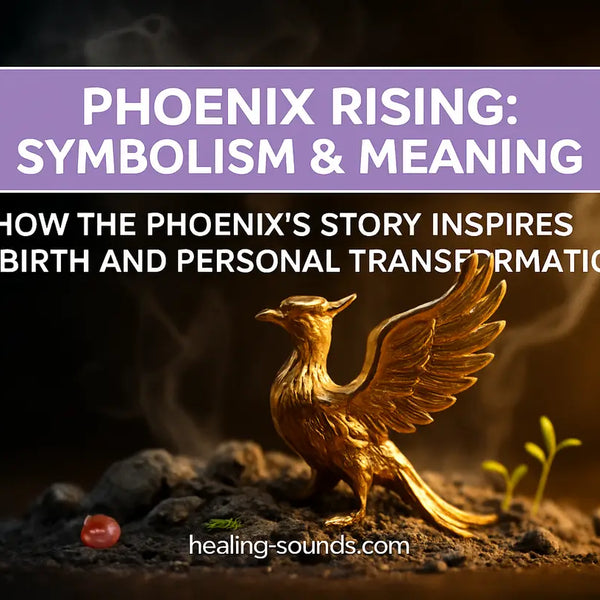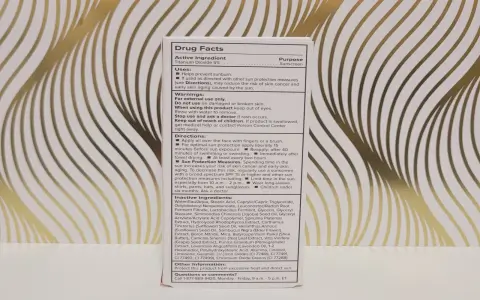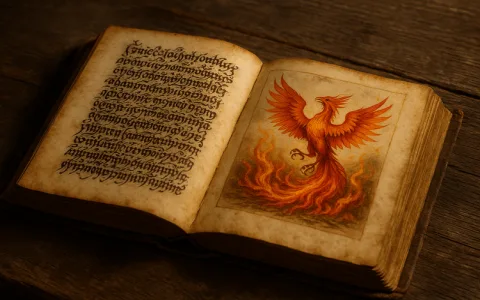The Decision to Burn Down the Comfortable Cage
You look at the myth of the phoenix, and what do you usually see? A big bird, some nice flames, and then poof it’s new again. Clean, perfect, ready to fly. But I figured that had to be total BS. Nothing important ever happens that clean. I mean, if the secret of rebirth was just waiting for destiny to light a match, we’d all be phoenixes already, wouldn’t we? I needed to know what the real, practical mechanic of that fire was.
For me, the practice started because I was stuck. Not just “bored,” but truly stuck. For ten years, I had built this ridiculous, cushy consulting career. Good money, decent hours, but every morning felt like shoving wet cement into my brain. I was the ashes, but without the benefit of the flame yet. That job was my massive, comfortable nest—a nest made of bills, routine, and pure inertia.
Diving into the Myth and Mapping the Process
I started digging. I read everything I could find on the phoenix across different cultures. Forget the beautiful illustration; I was hunting for the instruction manual. The crucial part wasn’t the fire itself; it was the bird’s decision to build its own pyre, using spices and aromatic woods. It chooses the moment, the materials, and the method of its own demise. That was the first big realization: The rebirth isn’t passive; the destruction has to be voluntary.

The practice I designed for myself was simple, terrifying, and painful: I had to build my pyre and light it myself. I looked at my life and identified the structures that provided comfort but prevented growth. The number one culprit was that damn job.
- Step 1: Identifying the Fuel (The Comforts): I made a list of every single financial and routine dependency tied to my job. The health insurance, the monthly salary that covered a mortgage I probably couldn’t afford otherwise, the easy routine of knowing exactly what next week would look like.
- Step 2: Gathering the Wood (The Preparation): This wasn’t immediate quitting. This was months of meticulous planning. I squirrelled away six months of absolute survival money, not comfort money. I also spent time writing down exactly who I wanted to be after the burning, not just what I wanted to do. This was the blueprint for the new bird.
The Actual Burning: Pulling the Trigger
Then came the heavy lifting. I submitted my resignation. I didn’t have a plan B, just a general idea of pursuing the writing and teaching I actually loved. My boss thought I was having a mental breakdown. My wife was supportive but understandably nervous. That moment, hitting “send” on the resignation email, felt like I had just thrown gasoline onto everything I had built.
The first few weeks were pure hell. This is the part the myths don’t focus on: the heat, the smoke, and the immediate, overwhelming feeling of loss. I watched the routine crumble. The structure I had hated suddenly became the structure I missed. My savings started dropping fast. Doubt wasn’t just creeping in; it was building a damn fortress in my skull.
This is where I realized the second secret:
The phoenix doesn’t just rise; it spends time as ashes.
I was the ashes. I was messy, useless, unrecognizable dust. There was no instant glow-up. I spent three months waking up feeling terrified, fighting off the urge to call my old contacts and beg for my comfortable cage back. The “ashes phase” required doing the uncomfortable, unglamorous work of sifting through the remains.
I forced myself to sit in the discomfort. I had to learn how to manage without the safety net. I took small, terrible, low-paying gigs just to keep the momentum going, which was incredibly humbling after years of six-figure deals. Every small writing win, every new student, felt like a single feather growing in the dust.
The True Rebirth Secret
What I eventually grasped, the true secret behind the myth, wasn’t some cosmic alignment or divine intervention. It was about managing the interim phase—the time between destruction and renewal. The myth sells you the instantaneous rising, but the reality is a slow, gritty process of reconstruction, built from the remnants of what was necessary to destroy.
My comfortable, old self had to die. And I had to be the one to kill it. The rebirth isn’t magic; it’s the commitment to stay in the fire long enough to let the unnecessary parts burn away, even when all you feel is pain and all you see is dust. It’s choosing to rebuild, one single, painful fiber at a time, instead of running back to the structure you left behind. That, I believe, is the true, messy, and totally achievable secret of the phoenix.














